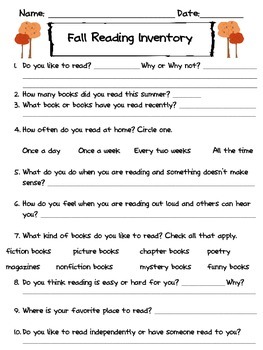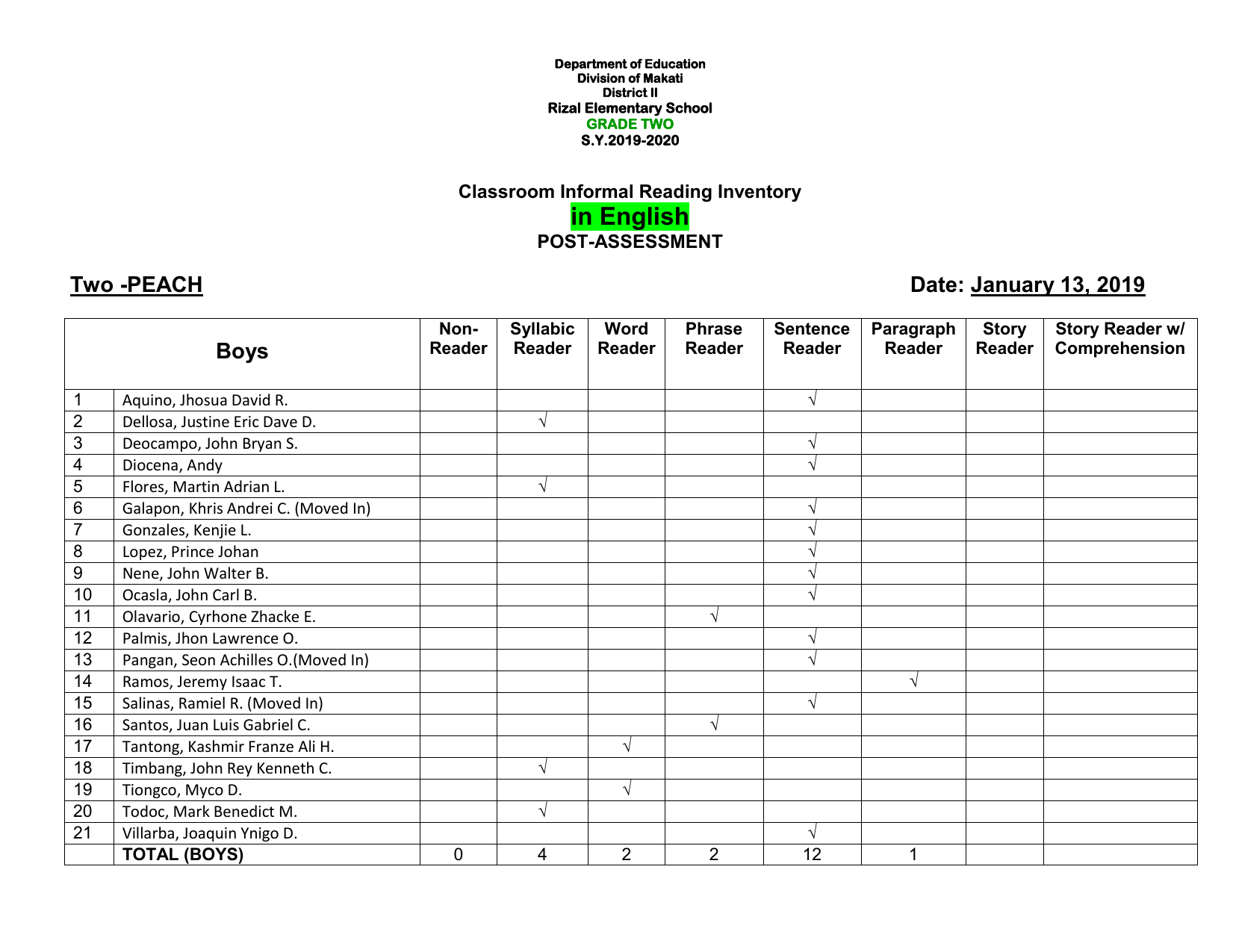
Students don't typically show big drops on this test. Also, if your student shows a significant drop in their score from the last Lexile they received, they probably had a bad day or weren't giving their best that day. The key is that the student is showing growth. When you get a Lexile score for your child, keep in mind that a score that is slightly below the 50th percentile is still a "normal" score (half of all students are below the 50th percentile). A popular classroom assessment tool, this supplement is widely used by pre-service and in-service teachers to assess or test students. If the RI score on the report card is "BR," then the student has not yet scored a Lexile of 100 and is still considered a beginning reader. For each season, it shows the 50th percentile (the median score for all testers in the nation) and the 90th percentile (achievement which is higher than 89% of the testers in the nation). The chart shows the fall, winter, and spring results for all students nationwide at each grade level. The score that we get from the test is called a Lexile score, and the number is applied to the attached chart to get an idea if the student is reading at, above, or below grade level. Reading Inventory Reading level measurement (0-2000) to rate books and students reading levels Based on semantic and syntactic structures Matches readers.

Reading comprehension simply means how well they understand what they are reading. Essentially, an informal reading inventory is an authentic, diagnostic tool given individually to each student by a teacher to assess a student's strengths and weaknesses to determine reading. The research says that reading in areas of interest will motivate them to tackle more difficult text.The division uses the Reading Inventory test in grades 2-8 to determine a student reading comprehension level. This is the only reading inventory on the market to support the treatment of reading as a thinking process through questions and assessments that measure.

If you could take a trip, where would you go?īased on the responses to these questions, you can utilize these topics in therapy and help the dyslexic choose texts of interest (e.g., books, magazines, comic books).What pets, sports, or art activities do you like best?.What school subjects do you find most interesting?.What are your favorite television specials, videos, DVDs, computer games, and Internet websites?.What television programs do you like the most?.What after-school activities do you like best?.What is the best book that you ever read yourself?.What is the best book that was ever read to you?.One way to assess individual interests is by using a reading interest inventory such as the one below (adapted from Burns, Roe, & Ross, 1992, as cited in Rosalie Fink's 2006 book Why Jane and John Couldn’t Read-And How They Learned). Interests can run the gamut-anything from history to sports to auto mechanics to personal biographies-anything really. Likewise, incorporating interests in therapy activities can be motivating for the individual.

These computer-based tests provide teachers with information about students’ development in reading and mathematics skills that ensure every learner is on track to college and career readiness. So it is important that dyslexics are encouraged to read as much as possible and one way to get them to do this is by pursuing their interests. Most Fairfax County Public Schools (FCPS) middle school students and some high school students take the online Reading Inventory and Math Inventory assessments. Research has shown that the more one reads, the better one’s reading skills become. Many successful dyslexics have reported that they became motivated to read when allowed to read in areas of interest.



 0 kommentar(er)
0 kommentar(er)
